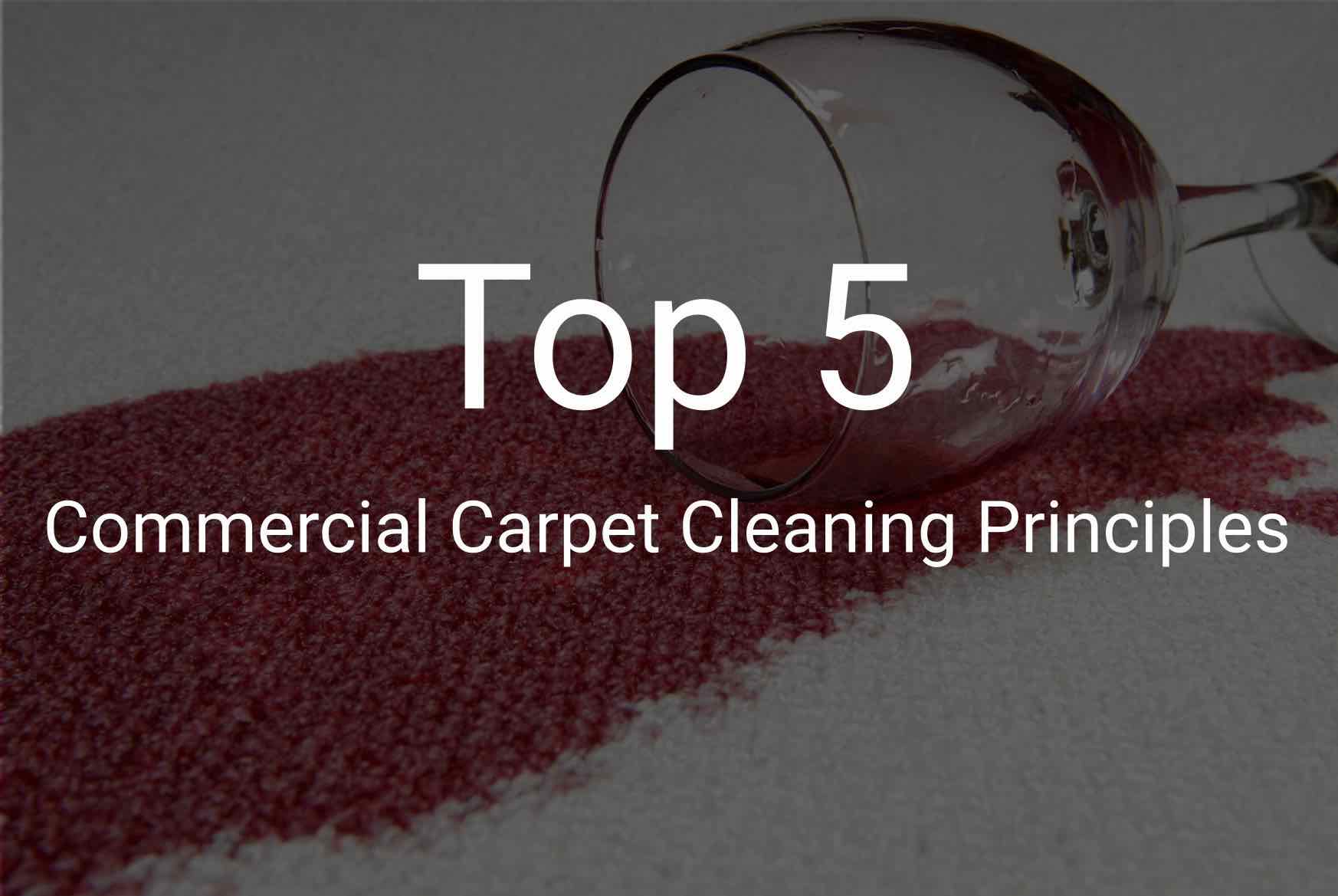Professional carpet cleaners most commonly use one of the five cleaning methods (Bonnet Cleaning, Absorbent Compound Cleaning, Encapsulation Cleaning, Hot Water Extraction Cleaning and Shampooing) when dealing with dirty commercial carpets. Even though every method has its advantages and limitations all carpet cleaning methods utilize five basic principles of cleaning: dry soil removal, soil suspension, extraction, grooming and drying.
Dry soil removal
It is estimated that 80% of all carpet soil can be removed through dry vacuuming. Therefore, before starting any cleaning procedure, the carpet should be thoroughly vacuumed. However, soil cannot be successfully removed without the use of professional equipment. Vacuuming with a high filtration (HEPA) vacuum cleaner is the best choice to accomplish this. Also, professional cleaners have a better understanding of how and where soils build up in carpet and what technology to use for best results. Dry soil removal phase includes nap preparation and dry vacuuming.
Soil Suspension
According to Institute of Inspection, Cleaning and Restoration Certification (IICRC), the main goal of soil suspension, or separation of fine particle, water-soluble and oily soils from fiber surfaces, is to separate the soil from fiber surfaces and hold it in suspension until physical removal can take place.
There are four fundamental activities of soil suspension:
- Chemical action – Detergents, builders and solvents must be used with caution. If the specific dilatation ratio is not applied, the chemicals may damage the carpet fibers.
- Elevated temperature – Heat enables faster, more efficient cleaning than cold water because higher temperatures accelerate water molecules causing cleaning agents to function more effectively.
- Time (Dwell time) – The longer cleaning chemicals stay in contact with the soil the better are the cleaning results.
- Agitation – Agitation, mechanical or manual, provides for more uniform distribution of cleaning products. This enhances soil suspension in the carpet.
Extraction
The third basic principle of commercial carpet cleaning is extraction. Once dry soil has been removed from carpet it is the time to extract remaining suspended soils. The best method for extraction of the soil is steam cleaning or hot-water-extraction method. This method can remove more than 95 percent of dirt and bacteria from carpeting and it is best for dealing with heavy buildups of oil, grease and soil.
Grooming
Grooming process has actually very little to do with soil removal. However, it does help the next step – the drying. Grooming helps eliminate matting of the carpet and uneven wear and enhance evaporation, which speeds up drying time. In the long run, it can actually improve and prolong the carpet performance.
Drying
Drying is a crucial step in the cleaning process. This phase must not exceed 24 hours, because it can cause serious problems. If the carpet is not completely dried, the moisture can damage the fibers. Damp materials like wooden floors beneath wet carpets can provide a good place for mold and mildew to grow. The ideal dry time for carpet should be around six to eight hours.

